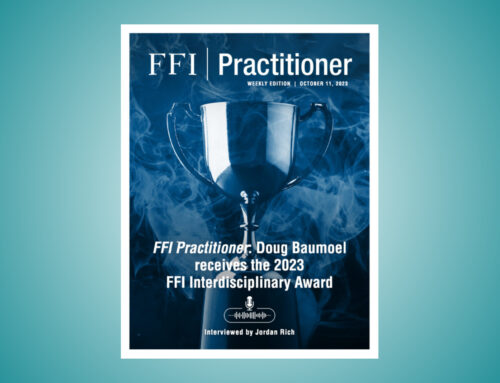Why Your Family Meetings Aren’t Working
(And How to Fix Them)
By: Dr. Shay Harris-Pierre, LPC, CFT
Estimated read time: 7-8 mins
Most enterprising families know they should be holding family meetings. They gather to discuss dividends, transitions, strategy, and the future of the enterprise. The hope is always that these meetings will bring clarity and alignment. Yet many families walk away from them frustrated. The same arguments resurface, tensions remain unresolved, and progress feels elusive. Why does this happen?
Because family business conflict is rarely about a single issue. It sits at the intersection of economics, power, and relationships. Trying to separate these threads and solve them one by one is like trying to do individual therapy to heal an entire family system. You may make some impact, but you cannot possibly address the whole.
Similarly, systemic conflict in family enterprises is often rooted in identity. Decisions made in family meetings are rarely just about numbers or policies; they touch on underlying values, beliefs, and deeply held aspects of how each stakeholder sees themselves. Identity-based conflict is among the most difficult to navigate, because when a person’s sense of who they are, and their rightful place in the family or enterprise, is challenged, they will go to great lengths to protect it.
This is why family meetings so often become flashpoints. They are not just about policies or numbers; they are also about belonging, recognition, and identity. When these layers collide, even the most carefully planned agenda can unravel.
Family meetings fail not because families don’t care. In fact, the issues being discussed are often existential issues to some of the stakeholders. Rather, they often fail because the meetings themselves are not designed with this systemic complexity in mind. To understand why conflict persists in these settings (and how to create meetings that truly work) we can borrow from the field of family therapy, specifically Structural Family Therapy and the work of Salvador Minuchin. Concepts like homeostasis, subsystems, rules, roles, and boundaries shed light on why meetings so often collapse under the weight of unspoken conflict, and how they can instead become spaces where both the business and the family are strengthened.
The Systemic Nature of Conflict
When conflict arises in a family enterprise, it is tempting to label it as either financial (a debate over dividends), personal (a clash of personalities), or structural (a disagreement about governance). But the reality is more complex.
Take a sibling dispute about reinvesting profits versus distributing dividends. On the surface, this appears to be an economic question. But it is also about disrespected power (whose voice matters more in shaping the future of the business), values like differences in risk tolerance, and about historical impasse – the baggage family members carry into the room from the past. Address the economic issue alone, and the relational tension remains. Address the relational hurt, and the power imbalance lingers. Unless the system as a whole is acknowledged, the conflict continues to simmer.
This is why family meetings often feel circular. Families attempt to treat conflicts as isolated disputes, but because these issues live in multiple domains at once, no single solution ever feels sufficient.
Why Family Meetings Struggle with Conflict
Family meetings are often where systemic conflict surfaces most visibly. That’s because they gather all the threads (economics, power, and relationships) into one room.
Yet meetings are rarely designed to hold this complexity. They tend to falter for three main reasons:
Passive Conflict
Many families avoid naming conflict directly, believing it will make things worse. But unspoken conflict does not disappear; it goes passive. It shows up in side conversations, silent resistance, or disengagement during meetings. The surface agenda may move forward, but the undercurrent of tension derails progress.
Systemic Dynamics at Play
Well-established family patterns (who leads, who withdraws, who mediates) reassert themselves in meetings. Even with formal agendas, families often fall back into long-standing relational scripts. The system seeks homeostasis, and the meeting becomes another stage for replaying entrenched dynamics rather than reshaping them.
Blurring of Domains
Meetings often collapse multiple subsystems into one. A shareholder meeting drifts into leadership debates. A family retreat devolves into a arguments about fairness. When boundaries are unclear, conflict escalates. Members feel ambushed or silenced because the conversation has strayed into a domain they were not prepared to address.
The result? Meetings that were meant to promote clarity instead reinforce distrust, leaving families exhausted and no closer to resolution.
What Structural Family Therapy Offers
Structural family therapy, pioneered by Salvador Minuchin, provides language and frameworks that help make sense of these struggles. While it was developed for clinical settings, a few of its concepts apply powerfully to business families navigating conflict.
Homeostasis
Families tend to preserve equilibrium, even if it is unhealthy. This explains why conflict resurfaces in every meeting. The system pulls back to familiar patterns, resisting change. Without intentional design, meetings replicate the very dynamics they were meant to change.
Subsystems
Families are composed of overlapping subsystems: marital, sibling, parent–child. In business families, new ones emerge: ownership, management, governance. Conflict often arises when the expectations of one subsystem bleed into another. Meetings that fail to differentiate these forums inadvertently inflame tensions rather than clarifying them.
Rules and Roles
Every family has invisible rules: who speaks first, who is listened to, what topics are off-limits. Roles like “eldest leader,” “peacekeeper,” or “outsider” silently shape participation and fuel passive conflict. Meetings that do not examine these rules risk entrenching inequality, silencing some voices while privileging others.
Boundaries
Healthy systems rely on boundaries, but in family businesses those boundaries are rarely clean. The lines between family and business, ownership and management, or even generational roles are often layered and overlapping. This overlap makes meetings especially vulnerable to tension. A nephew may be his uncle’s superior in the business, but his junior in the family. A parent may chair the board while still treating their adult children as if they are teenagers. When these roles collide, confusion and resentment are almost inevitable. Family meetings often bear the weight of this complexity: what begins as a governance discussion slips into a parental dynamic, or a business update turns into a family power struggle. The challenge isn’t that boundaries don’t exist, it’s that they are constantly shifting, difficult to maintain, and require conscious attention if meetings are to be constructive.
Addressing Disputes In the Room
Avoiding challenging conversations in meetings is a recipe for failure. The goal is not to suppress disagreements but to surface them in a constructive way. Conflict, when understood systemically, is information: it signals where the system is out of alignment.
By applying structural family therapy concepts, families can reframe conflict as a systemic challenge rather than a personal flaw. Instead of labeling someone as “greedy” or “unreasonable,” the family can recognize that their distribution debate is really about blurred boundaries between ownership and management. Instead of shaming a sibling for withdrawing, they can see the system’s pull toward homeostasis and explore ways to shift it.
This reframing reduces defensiveness and makes solutions possible. Conflict is no longer about blame; it is about realigning the system.
How to Fix Family Meetings: A Systemic Approach
If conflict is systemic, meetings must be designed with the system in mind. Here are practical ways families can reshape their meetings, so they serve both business needs and family relationships:
Acknowledge Conflict as Systemic
Begin with the shared understanding that conflict is not the fault of one person, nor something to be avoided. It is the natural byproduct of a complex system. Naming this truth at the outset normalizes tension and reduces shame.
Map Roles and Rules
Every family carries invisible rules and ingrained roles into meetings. Who tends to speak first? Who mediates? Who withdraws? Bringing these dynamics into the open allows families to ask whether they are still serving the group, and to experiment with new ways of sharing voice and authority.
Design Against Homeostasis
Expect the system to revert to familiar patterns. Counteract this by introducing structures that break the mold: use outside facilitation, shift the setting, or create new rituals. Even small changes can disrupt entrenched dynamics.
Protect Boundaries
Unlike non-family enterprises, family business boundaries can never be perfectly clean. Family hierarchy and business hierarchy often collide. These overlaps often surface in meetings, where conversations can slide between business and family dynamics. The task is not to eliminate this complexity but to acknowledge it and make it explicit, clarifying which role someone is speaking from, and which forum the discussion belongs in.
Use Conflict as Data
When tensions flare, resist the temptation to suppress them. Ask: what is this conflict telling us about the system? What rules, roles, or boundaries are unclear? This perspective turns conflict into a guide for redesign, rather than a threat to avoid.
A Composite Example
Consider a family-owned firm with three siblings as equal owners. Two work in the business; one does not. Their family meetings often disintegrate into heated arguments about dividends versus reinvestment.
For years, they try technical solutions: drafting distribution policies, bringing in accountants. Yet the resentment persists. The sibling outside the business feels voiceless; the siblings inside feel unappreciated.
When they begin applying a systemic lens, the problem becomes clearer. The ownership and management subsystems are blurred: siblings who manage the company dominate the conversation, while the sibling outside management feels marginalized. The rules about who speaks first are implicit but powerful. Boundaries between “strategic business decisions” and “ownership rights” are unclear.
With this awareness, they restructure their meetings. They establish a shareholder forum where all three siblings have equal voice, and a separate management forum for operational issues. They rotate facilitation to disrupt homeostasis. They agree on rules for speaking order to ensure balance. Conflict does not disappear, but it becomes navigable, and the family begins to experience meetings as spaces of possibility rather than futility.
The Promise of Conflict-Aware Meetings
When families recognize that conflict is systemic, not personal, they can transform their meetings. Instead of endlessly replaying old battles, meetings can become structured forums for clarity, repair, and renewal.
The key is not to eliminate conflict but to redesign meetings so conflict can be held productively and conflict can be managed. Structural family therapy concepts offer a roadmap: acknowledging homeostasis, mapping subsystems, naming rules and roles, clarifying boundaries.
Families who do this not only make better business decisions; they also strengthen the relationships that make stewardship across generations possible. Conflict becomes less of a threat and more of a teacher, guiding the family toward structures that honor both their enterprise and their connection to one another.
Conclusion
Family meetings aren’t working because they’re often asked to solve conflicts without acknowledging the systemic nature of those conflicts. Economic, power, and relational issues are inseparable; treating them as isolated strands only ensures that the same tensions will resurface.
But when families bring a systemic lens—drawing on insights from family therapy—they can redesign their meetings in ways that hold conflict, rather than avoid it. In doing so, they unlock the real purpose of family governance: not simply to make decisions, but to create spaces where both the family and the business can thrive, together, across time.
Stay in the Know
Get our latest articles, tips, and insights delivered straight to your inbox.
Share this Insight, choose your platform!
About Us
Continuity Family Business Consulting is a leading advisory firm for enterprising families. Using a full suite of service capabilities, we help families prevent and manage the single greatest threat to family and business continuity: conflict. It is through this lens that we advise our clients and build customized strategies for succession planning, corporate governance, family governance, and more. We help families improve decision making, maximize potential and achieve continuity. To inquire, contact us.











